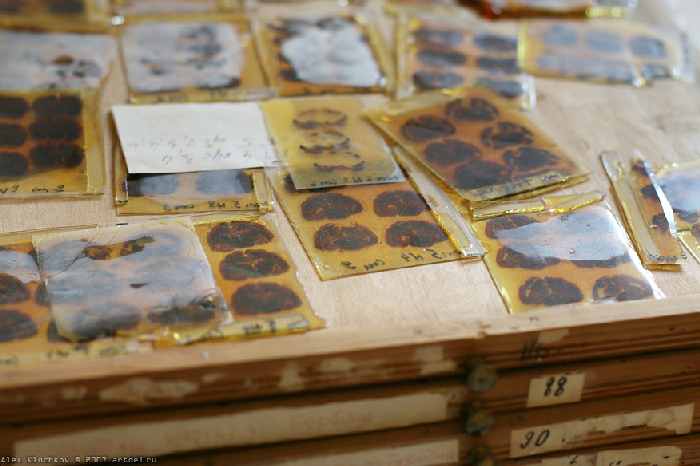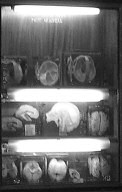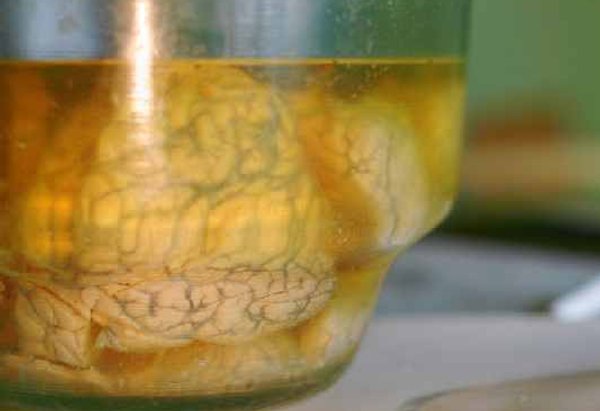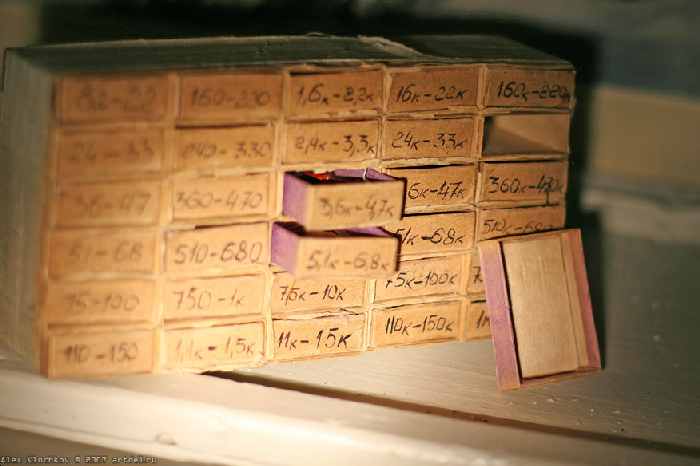When I heard about this cemetery so abnormal, but super great, I went back and said in a voice of much surprise: WOW! And is that being in the brains of those important people in psychology is very cool, for me Pavlov and Vygotsky were two great fathers of psychology, geniuses. So I wanted to hang this article take a very kurioso blog on this blog, so that they know more about this unusual cemetery.
What makes a man a genius?. Neuroscientists Russians were asked the same question at the beginning of the twentieth century and did exactly what seemed reasonable at the time. Collect and dissect the brains of some of the greatest cultural figures in a large collection called "The Pantheon of brains" in the "Moscow Brain Research Institute research laboratory, museum and cemetery illustrious Bolshevism. Surprisingly, the latest brain was added in 1989.
What makes a man a genius?. Neuroscientists Russians were asked the same question at the beginning of the twentieth century and did exactly what seemed reasonable at the time. Collect and dissect the brains of some of the greatest cultural figures in a large collection called "The Pantheon of brains" in the "Moscow Brain Research Institute research laboratory, museum and cemetery illustrious Bolshevism. Surprisingly, the latest brain was added in 1989.
Lab neurological  abandoned Russian photography. Source: artdel.ru
abandoned Russian photography. Source: artdel.ru
 abandoned Russian photography. Source: artdel.ru
abandoned Russian photography. Source: artdel.ru Research into brain anatomy was one of the special issues interest in various Russian universities. Collecting and mapping brains of elite Russians in a structured way in Moscow began in 1924 with Lenin's brain by the German neurobiologist Oskar Vogt and his collaborators and is one of the most exciting and at the same time challenging chapters in the history of medicine. The materialist explanation of the psychic (as opposed to metaphysics) was the main objective of the Institute. Vogt
not dodge the challenge, and took just over 34,000 a year minimum cut sheets of the brain of Lenin and subject them to study. According to the study of Vogt, Lenin's brain showed a large number "giant cell" that Vogt was a sign of higher mental function "giant cells" were cortical pyramidal cells of unusual size. His first report on the results was enthusiastic
not dodge the challenge, and took just over 34,000 a year minimum cut sheets of the brain of Lenin and subject them to study. According to the study of Vogt, Lenin's brain showed a large number "giant cell" that Vogt was a sign of higher mental function "giant cells" were cortical pyramidal cells of unusual size. His first report on the results was enthusiastic

"the rapid development of the pyramidal cells of the cerebral cortex was, inevitably, an intensification of the overall activity of the various divisions of the brain. The large number of connections linking cells from these portions of the brain that otherwise would have been widely separated, which also explains the wide range and diversity of ideas that were developed Lenin's brain, and explains in particular its ability to quickly imposed when he was confronted with situations and problems of high complexity. The multiplicity of ideas, along with the scope and speed of his power to conceive, Lenin produced in great intuition. "
the brain was in 1945 in Berlin, and after an attempt by the U.S. claim by scientists Belgian L. And A. Van Bogaert Dewulf, Russia launched a military operation to retrieve it and bring him back to Moscow.
The collection of "The Pantheon of Brains" also contains the brains of some of the greatest psychologists and Russian neurologists and has many curious aspects, like the mysterious death in strange circumstances of its founding scientist Vladimir Bekhterev. After the death in 1927, his brain was immediately added to the collection.
the brain was in 1945 in Berlin, and after an attempt by the U.S. claim by scientists Belgian L. And A. Van Bogaert Dewulf, Russia launched a military operation to retrieve it and bring him back to Moscow.
The collection of "The Pantheon of Brains" also contains the brains of some of the greatest psychologists and Russian neurologists and has many curious aspects, like the mysterious death in strange circumstances of its founding scientist Vladimir Bekhterev. After the death in 1927, his brain was immediately added to the collection.
Lab neurological  abandoned Russian photography. Source: artdel.ru
abandoned Russian photography. Source: artdel.ru
 abandoned Russian photography. Source: artdel.ru
abandoned Russian photography. Source: artdel.ru It had been ten years since the Revolution, and a cold December afternoon Bekhterev Joseph Stalin called for him to come to the Kremlin. Stalin was depressed and at that time, dedicated to the struggle for power with Trotsky and his followers. Bekhterev diagnosed with "severe paranoia." The same day he had visited the Kremlin died suddenly (some authors say that a couple of days later). According to rumors, Stalin had killed, making it the revenge of patient diagnosis. Bekhterev
not see his plan come to fruition, but it was his own brain that enriched the collection of the Moscow Institute (the weight was 1720g). The library acquired the brain of politicians, famous writers, poets, musicians, throughout the Soviet Union. No wonder, for example, the presence of Russian brain leading neuroscientists as
neurologist, GI Rossolimo 1860-1928. 1543g;
physiologist, IP Pavlov 1517g 1849-1936;
neurologist, 1879-1939 Kroll MB 1520g;
psychiatrist, PB 1875-1933 Gannushkina 1495g;
psychologist, LS Vygotsky 1896-1934.
During the Soviet period, the work in Moscow Brain Research Institute continued behind closed doors.
The collection continued to expand in 1989 with the incorporation of the brain of AD Sakharov (1921-1989) an eminent Soviet nuclear physicist, dissident and human rights activist. He was a defender of civil liberties and reforms in the Soviet Union. He was awarded the Nobel Prize Peace in 1975, his brain weighed 1440g.
not see his plan come to fruition, but it was his own brain that enriched the collection of the Moscow Institute (the weight was 1720g). The library acquired the brain of politicians, famous writers, poets, musicians, throughout the Soviet Union. No wonder, for example, the presence of Russian brain leading neuroscientists as
neurologist, GI Rossolimo 1860-1928. 1543g;
physiologist, IP Pavlov 1517g 1849-1936;
neurologist, 1879-1939 Kroll MB 1520g;
psychiatrist, PB 1875-1933 Gannushkina 1495g;
psychologist, LS Vygotsky 1896-1934.
During the Soviet period, the work in Moscow Brain Research Institute continued behind closed doors.
The collection continued to expand in 1989 with the incorporation of the brain of AD Sakharov (1921-1989) an eminent Soviet nuclear physicist, dissident and human rights activist. He was a defender of civil liberties and reforms in the Soviet Union. He was awarded the Nobel Prize Peace in 1975, his brain weighed 1440g.
Lab neurological  abandoned Russian photography. Source: artdel.ru
abandoned Russian photography. Source: artdel.ru
 abandoned Russian photography. Source: artdel.ru
abandoned Russian photography. Source: artdel.ru Sources: wikipedia, artdel.ru, mindhacks, PD
whonamedit by Anfrix (one of my favorite blogs) for mentioning us as a source is the "Pantheon of brains of geniuses
whonamedit by Anfrix (one of my favorite blogs) for mentioning us as a source is the "Pantheon of brains of geniuses


0 comments:
Post a Comment